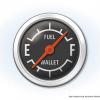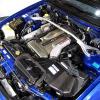Nitrogen In My Tyres!
Announcements
-
Similar Content
-
Latest Posts
-
By DraftySquash · Posted
Must be for the car’s lucky charm 🤷🏽♂️ She runs fine, but it just seems to take about 1L less. Maybe I’ll have the oil sump dropped at some point to check if there is anything -
By DraftySquash · Posted
Hmmm interesting. Mine is the exact same and clearly the right one. The mystery of the engine oil being full after 3.5-4L continues -
Yes I as well would like to find out where I could get some of the seat material with the red or blue small squares in it
-
By DraftySquash · Posted
Thanks a lot for this @GTSBoy Mine is a NEO too so this is a good reference. It’s just weird because I’m putting in 4L and it already reaches the H mark
-






Recommended Posts
Create an account or sign in to comment
You need to be a member in order to leave a comment
Create an account
Sign up for a new account in our community. It's easy!
Register a new accountSign in
Already have an account? Sign in here.
Sign In Now